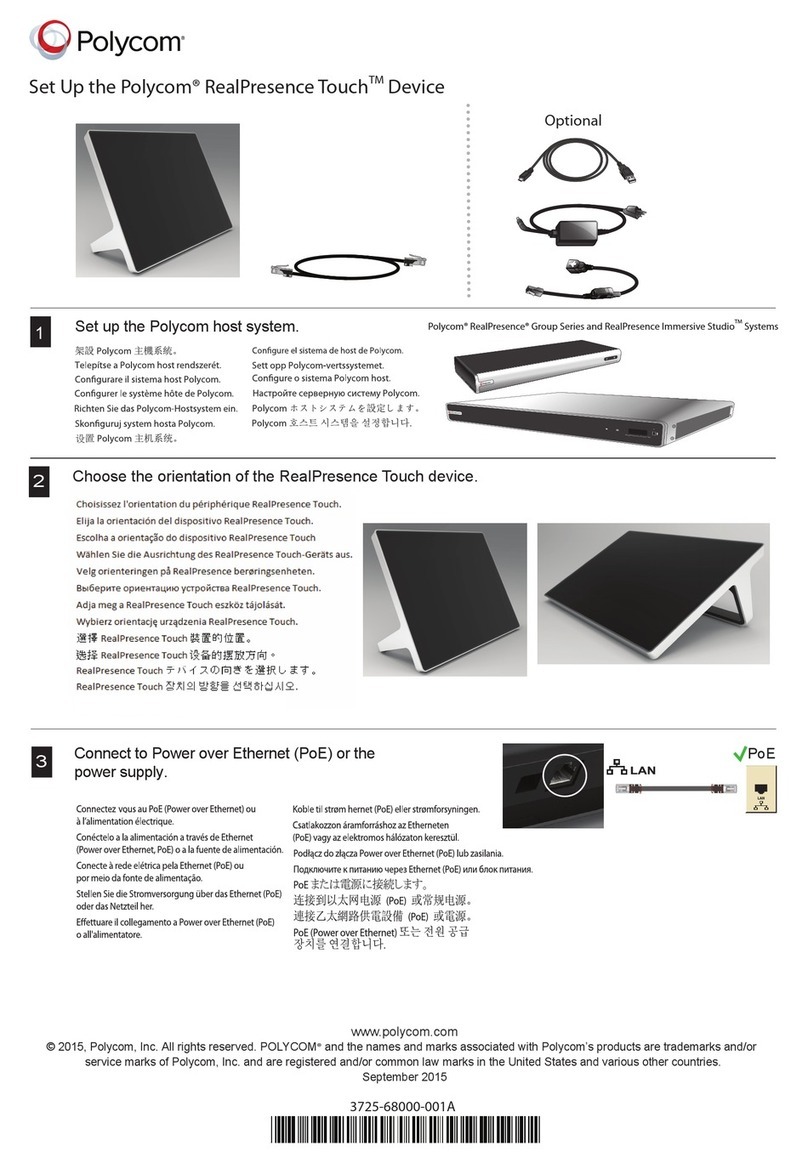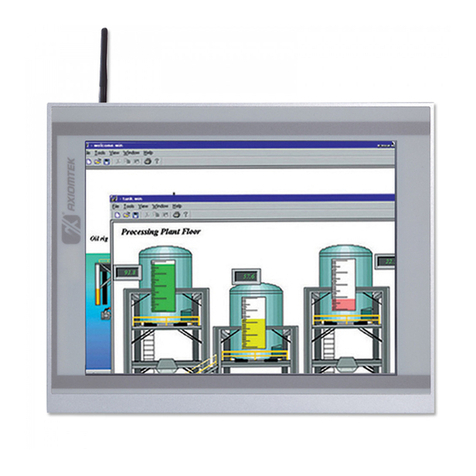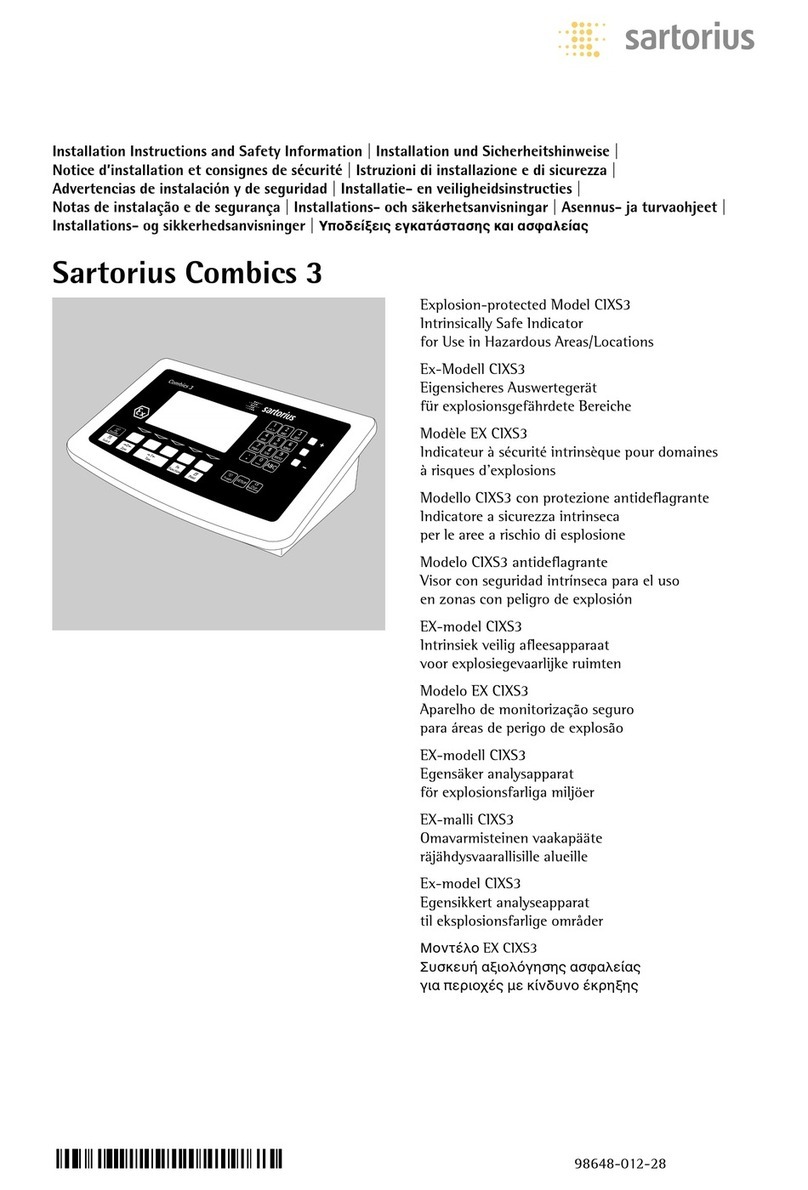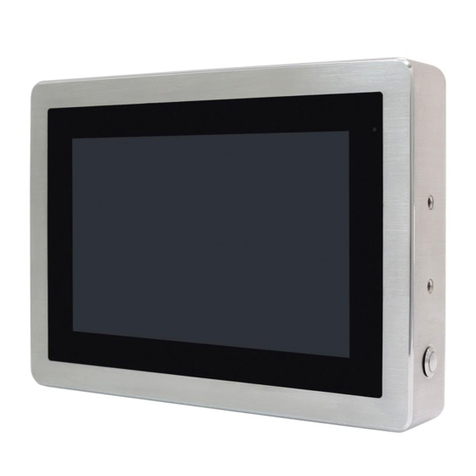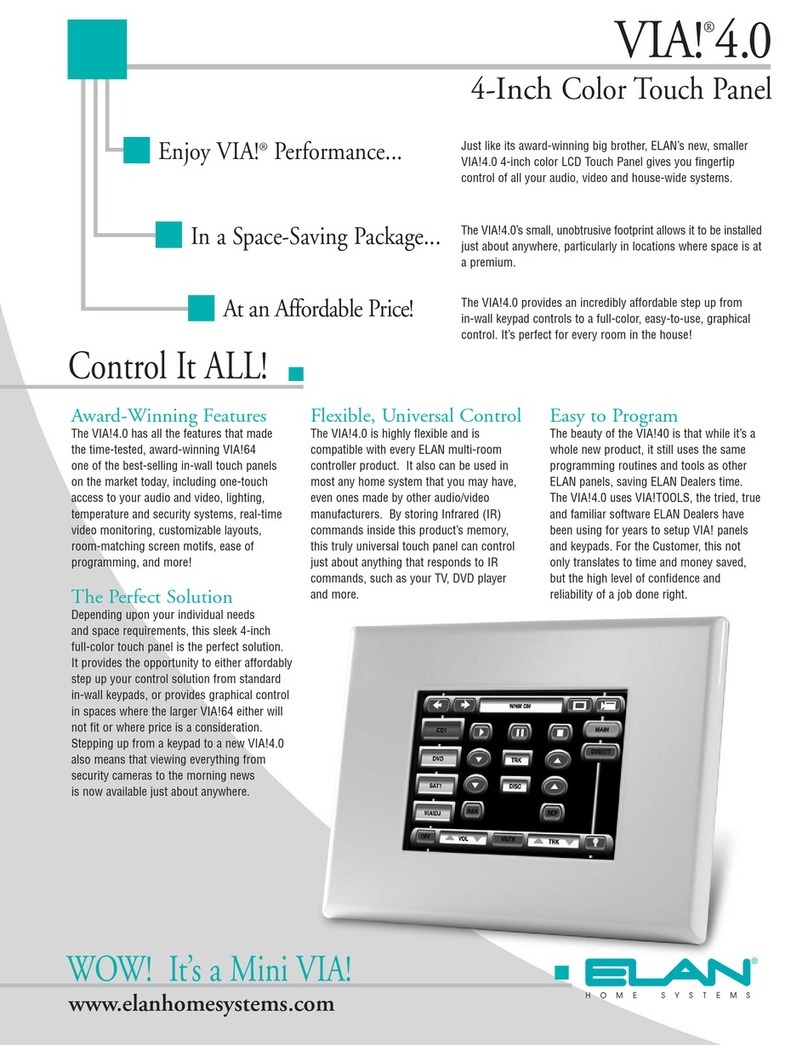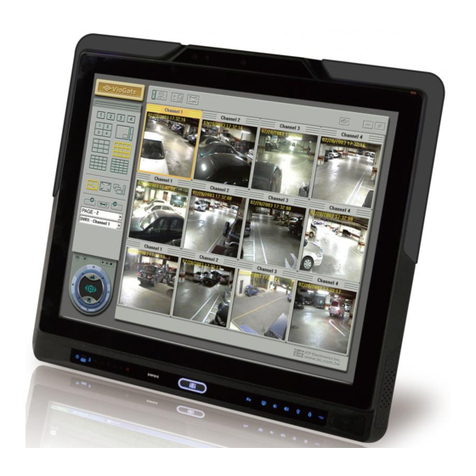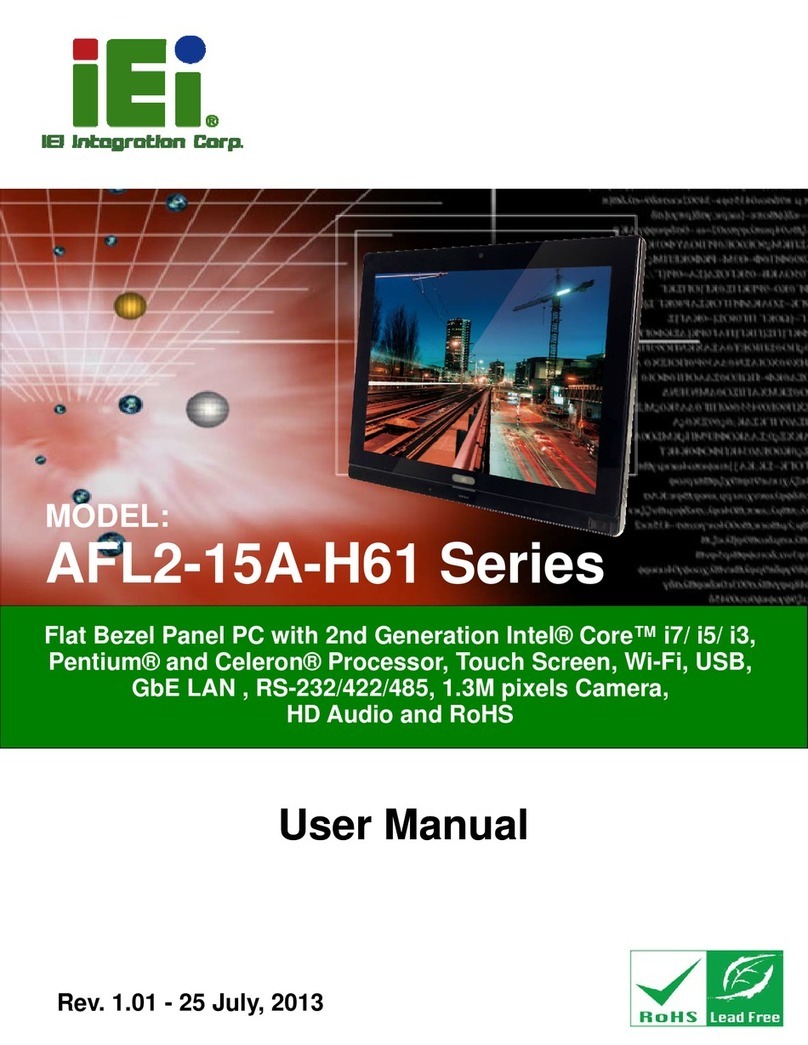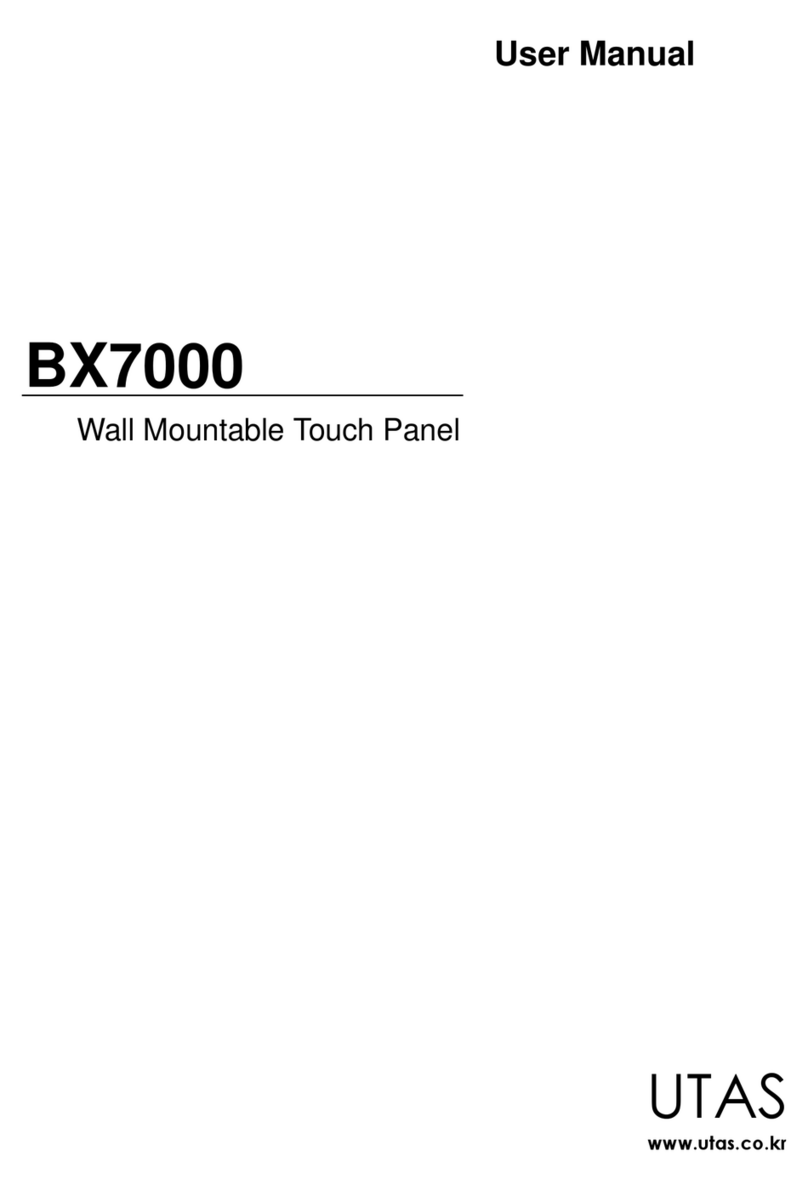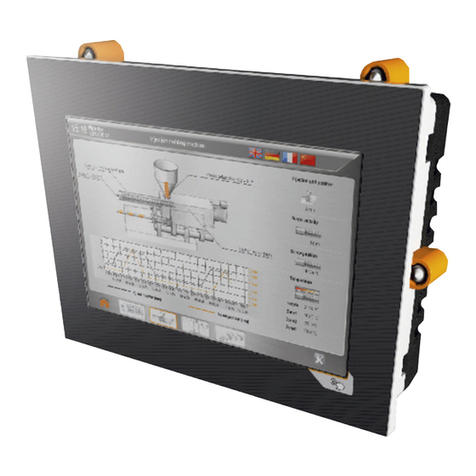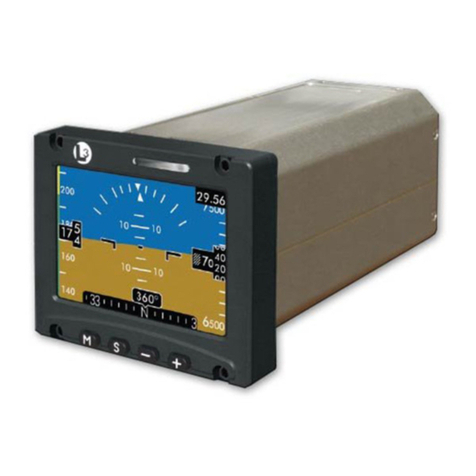EES BSM User manual

Operating manual
MSM-BSM2G-BA-UK-001
Panel Mounted
Fault Annunciator Series
BSM –Panel-mounted fault annunciator (2nd Generation)

Table of Content
Page 2 of 45 MSM-BSM2G-BA-UK-001
Table of content
1 Validity .................................................................................................................................................... 4
2 General notes......................................................................................................................................... 6
2.1 Additional instructions ....................................................................................................................... 6
2.2 Usage................................................................................................................................................ 6
2.3 Target group ..................................................................................................................................... 6
2.4 Symbol definition............................................................................................................................... 6
2.5 Safety instructions............................................................................................................................. 8
2.5.1 Appropriate use .......................................................................................................................... 8
2.5.2 Storage of the manual................................................................................................................ 8
2.6 Customer service .............................................................................................................................. 8
2.7 Copyrights, trademark rights, GNU licenses .................................................................................... 9
3 Functional description ........................................................................................................................ 10
3.1 Basic set-up of the BSM ................................................................................................................. 10
3.2 Internal Relay cards (optional) ........................................................................................................ 11
3.3 Dual power supply (optional) .......................................................................................................... 11
3.4 Cascading of several fault annunciators......................................................................................... 11
3.5 Labelling.......................................................................................................................................... 12
3.6 Monitoring LEDs, buttons and connections .................................................................................... 13
3.7 Diagnosis ........................................................................................................................................ 14
3.7.1 Watchdog-LED „Self-monitoring“ and Live-relay ..................................................................... 14
3.7.2 Error codes............................................................................................................................... 15
3.7.3 Operation modes...................................................................................................................... 15
3.8 Terminal assignments..................................................................................................................... 16
3.9 Technical data................................................................................................................................. 17
4 Mounting and installation ................................................................................................................... 20
5 Configuration ....................................................................................................................................... 21
5.1 Cascading functionality (DIP-switch combination S1) .................................................................... 21
5.2 Alarm group related DIP-switch combinations (S10 –S20) ........................................................... 21
5.3 Configuration of the relay groups.................................................................................................... 22
5.4 Default settings ............................................................................................................................... 22
6 Parameterisation ................................................................................................................................. 23
6.1 Main Menu Language ..................................................................................................................... 26
6.2 Main Menu Parameter .................................................................................................................... 26
6.2.1 Menu Serial Interface ............................................................................................................... 27
6.2.2 Menu Monitor ........................................................................................................................... 27
6.2.3 Menu Device Administration .................................................................................................... 28
6.2.3.1 Submenu New/Adapt......................................................................................................... 28
6.2.3.2 Submenu Export/Import..................................................................................................... 30
6.2.3 Menu System ........................................................................................................................... 31
6.2.3.1 Submenu Security ............................................................................................................. 31
6.2.3.2 Submenu Error Mask......................................................................................................... 31
6.2.4 Menu Master-device / Slave-device1..3................................................................................... 32
6.2.4.1 Submenu Reporting Channel ............................................................................................ 32
6.2.4.2 Submenu Reporting Sequence ......................................................................................... 36
6.2.4.3 Submenu Buttons & Function inputs ................................................................................. 37
6.2.4.4 Submenu Relay (function relays) ...................................................................................... 38
6.2.4.5 Submenu Repeat Relays................................................................................................... 39
6.2.4.6 Submenu LED-colour selection ......................................................................................... 40
6.3 Main Menu Configuration................................................................................................................ 41

Table of content
MSM-USM2G-BA-UK-001 Page 3 of 45
7 Parameterisation by Excel-file ...........................................................................................................41
7.1 Alarm channels and IEC objects..................................................................................................... 42
7.1.1 Alarms ...................................................................................................................................... 42
7.1.2 IEC-objects of the reporting channels ...................................................................................... 43
7.2 Repeat relays and IEC objects ...................................................................................................... 44
7.2.1 Relays ...................................................................................................................................... 44
7.2.2 IEC-objects of the repeat relays............................................................................................... 45

Validity
Page 4 of 45 MSM-BSM2G-BA-UK-001
1 Validity
The description covers BSM devices with the following options:
59
B
x
x
x
x
C
x
x
x
0
Number of reporting inputs
0
8
8 Reporting inputs
1
6
16 Reporting inputs *
2
4
24 Reporting inputs
3
2
32 Reporting inputs
4
0
40 Reporting inputs
4
8
48 Reporting inputs
Operating voltage
1
24 V AC/DC
2
48 - 60 V AC/DC
5
110 - 220 V AC/DC
Signal voltage
1
24 V AC/DC
3
48 - 60 V AC/DC
4
110 V AC/DC
H
125 V AC/DC
5
220 V AC/DC
LED-Colour
D
2-colour, adjustable (red, green)
Repeat relays
0
No internal repeat relays
R
8 relay outputs (for 8 way fault annunciator)
R
16 relay outputs (for 16 way fault annunciator)**
R
24 relay outputs (for 24 way fault annunciator)
R
40 relay outputs (for 40 way fault annunciator)
Redundant operating voltage
0
No additional power supply
1
24 - 60 V AC/DC
5
110 - 220 V AC/DC
59
B
C
0
Article number
* Also available in wide housing (96 x 192 mm)
** 16 way fault annunciator with integrated repeat relays only available in wide housing (96 x 192 mm)
Table 1.1: Matrix of BSM-C variants

Validity
MSM-USM2G-BA-UK-001 Page 5 of 45
59
B
x
x
x
x
P
x
x
x
0
Number of reporting inputs
0
8
8 Reporting inputs
1
6
16 Reporting inputs *
2
4
24 Reporting inputs
3
2
32 Reporting inputs
4
0
40 Reporting inputs
4
8
48 Reporting inputs
Operating voltage
1
24 V AC/DC
2
48 - 60 V AC/DC
5
110 - 220 V AC/DC
Signal voltage
1
24 V AC/DC
3
48 - 60 V AC/DC
4
110 V AC/DC
H
125 V AC/DC
5
220 V AC/DC
LED-Colour
D
2-colour, adjustable (red, green)
Repeat relays
0
No internal repeat relays
R
8 relay outputs (for 8 way fault annunciator)
R
16 relay outputs (for 16 way fault annunciator)**
R
24 relay outputs (for 24 way fault annunciator)
R
40 relay outputs (for 40 way fault annunciator)
1
8 relay outputs (independent from no. of inputs)
2
16 relay outputs (independent from no. of inputs)
Redundant operating voltage
0
No additional power supply
1
24 - 60 V AC/DC
5
110 - 220 V AC/DC
59
B
P
0
Article number
* Also available in wide housing (96 x 192 mm)
** 16 way fault annunciator with integrated repeat relays only available in wide housing (96 x 192 mm)
Table 1.2: Matrix of BSM-P variants
Version of the described parameterisation software: EES BSM Parameterisation V3.0.4.

General notes
Page 6 of 45 MSM-BSM2G-BA-UK-001
2 General notes
2.1 Additional instructions
2.2 Usage
This manual is a prerequisite for secure mounting and safe operation of the product and must be read
and understood before mounting.
2.3 Target group
This manual was written for qualified personnel which –based on their specific education and
knowledge and experience as well as their knowledge of the relevant norms and regulations –are
subject to deal with electrical sites and able to recognize and prevent possible hazards.
The qualified personnel is trained especially for the working environment and is familiar with the norms
and regulations.
2.4 Symbol definition
Security advice
Security advices are indicated with symbols in this manual. The security advices are expressed
through signal words that characterize the extent of the hazard.
This manual provides the safe and efficient use with the devices of the fault
annunciating series BSM (in the following called “BSM”, “fault annunciator”or
“device”). The manual is part of the device and must be stored always accessible for
the personnel in direct proximity of the device.
The personnel are supposed to thoroughly read and fully understand this manual
prior to starting any works. The major condition for secure handling is to obey to all
security and usage procedures described in this manual.
Furthermore the local prevention advices and general security preventions in the
installation site are obligatory.
The illustrations included in this manual serve for essential comprehension and are
subject to modifications matching the application.

General notes
MSM-USM2G-BA-UK-001 Page 7 of 45
Tips and recoomendations
Further markings
To accentuate operation instructions, results, listings, cross references and other elements, the
following markings are used in this manual:
Marking
Description
Step-by-step operation instructions
Results of operation steps
Cross reference to sections of this manual and
to further applicable documents
Listings without fixed sequence
[Button]
Control elements (e.g. buttons, switches),
Indication elements (e.g. signal lamps)
„Display“
Display elements (e.g. push buttons,
assignment of function buttons)
DANGER!
This combination of symbol and signal word warns of a
hazardous situation which can lead to death or severe
injuries if not avoided.
WARNING!
This combination of symbol and signal word warns of a
possibly hazardous situation which can lead to death or
severe injuries if not avoided.
CAUTION!
This combination of symbol and signal word warns of a
possibly hazardous situation which can lead to minor
injuries if not avoided.
NOTE!
This combination of symbol and signal word warns of a
possibly hazardous situation which can lead to material
damages if not avoided.
ENVIRONMENTAL PROTECTION!
This combination of symbol and signal word warns of
possible hazards for the environment.
This symbol accentuates useful tips and recommendations
for an efficient and failure-free operation.

General notes
Page 8 of 45 MSM-BSM2G-BA-UK-001
Important passage
Cross reference
2.5 Safety instructions
2.5.1 Appropriate use
The universal fault annunciator USM is intended for use according to the applications described in this
manual only and may only be used according to the conditions as described in the section “Technical
Data”. Every use that exceeds the appropriate use or unauthorized use is considered as incorrect use.
2.5.2 Storage of the manual
2.6 Customer service
For further technical information please contact our customer service:
Address
Elektra Elektronik GmbH & Co Störcontroller KG
Hummelbühl 7-7/1
71522 Backnang
Germany
Telephone
+ 49 (0) 7191/182-0
Telefax
+49 (0) 7191/182-200
E-Mail
info@ees-online.de
Internet
www.ees-online.de
Further we are looking forward to receiving feedback and experiences which result from the
application and are useful for improvement of our products.
WARNING!
Hazard of incorrect use!
Incorrect use of the annunciator can lead to hazardous situations.
Do never use the annunciator in EX-areas.
Do never use the annunciator within the range of irradiation sensitive devices
without considering the special precautions therefor.
The annunciators may not be opened or improperly modified.
The manual must be stored nearby the annunciator and must be accessible for the
personnel.
This symbol accentuates especially important passages.
This symbol refers to figures and other passages in this document or to further
reading.

General notes
MSM-USM2G-BA-UK-001 Page 9 of 45
2.7 Copyrights, trademark rights, GNU licenses
Copyright
The copyrights for this manual are reserved.
The surrender of this manual to third parties, reproduction in every type or form including extraction of
contents are not tolerable without written permission from Elektra Elektronik GmbH & Co.
Störcontroller KG (in the following “manufacturer” or “EES”), except for internal purposes. Any
violations oblige for compensation. The manufacturer reserves the right for additional titles.
The copyrights are reserved for the manufacturer.
© Elektra Elektronik GmbH & Co Störcontroller KG 2018
Usage of open-source-software
Our firmware partly contains source codes which have been produced under the GNU Public License
(GPL) by third parties and released for usage by everybody. This software underlies special open-
source-software licenses and the copyright of third parties. Every customer can use the open-source-
software freely in principle, according to the license provisions of the respective producer. The rights
of the customer to use this software for purposes exceeding the scope of our product are regulated in
detail in the regarding open-source-software licenses. The customer can use the open-source-
software –as regulated in the respectively applicable license –freely, exceeding the scope of the
software within our product.
The utilisation of the used open-source-software is possible free of charge. We do not charge a user
fee or any other comparable charges for the use of the open-source-software contained in our
products.
The GPL code as used in our product is published without guarantee and is underlying the copyrights
of the respective author. As far as programs contained in our products underlie the GNU General
Public License (GPL), GNU Lesser General Public License (LGPL), Clarified Artistic License or
another open-source-software license which prescribes that the source code is to be provided and the
software has not been provided in source code on a data medium together with the product, we will
provide it at any time upon request. If the consignment on a data medium is required, we will provide
this against an additional charge of € 10,-. Please channel you request to our customer support.
E-Mail: info@ees-online.de
Telephone: + 49 (0) 7191/182-0
Telefax: +49 (0) 7191/182-200

Functional description
Page 10 of 45 MSM-BSM2G-BA-UK-001
3 Functional description
3.1 Basic set-up of the BSM
The annunciators are available in 2 versions.
BSM-C: Basic version, configurable by DIP-switches
BSM-P: Software-parameterisable version
The fault annunciators are available with 8, 16, 24, 32, 40 or 48 signal inputs. The alarms are aligned
to groups of 8 inputs each on the device front. The closed front panel contains 4 push buttons, bi-
colour LED displays (red / green) and slide-in pockets for the labelling strips. The buttons have the
functions “horn acknowledement”, “alarm acknowledgement” and “lamp test” for the BSM-C and are
parameterisable for the BSM-P.
Two function inputs are available and can be used according to the chosen reporting sequence (e.g.
for external acknowledgement).
The annunciator features four change-over relays as integrated function relays. Alarm specific
functions (e.g. collective report or external horn triggering) as well as signalization of any malfunction
through a live-contact can be realized with the function relays.
All annunciators of the series BSM feature status retention upon power failure. This means that after
restoration of the supply voltage, the alarm status as of the moment of power failure is retained.
To forward single alarms input- or output parallel to a relay contact, two different methods can be
used:
1. Integration of additional relay cards (8 NO contacts each) as repeat relays. The assignment of
inputs to repeat relays can be done individually for BSM-P annunciators. The integrated
repeat relays are available as an option and have to be considered when ordering the device.
2. Connection of external relay modules through the CAN-Bus interface. For further details to the
relay extension modules, please refer to the separate datasheet MSM-EM-DB-UK.
All BSM fault annunciators provide a hardware-watchdog and software-monitoring. The fault-free
operation is indicated by an OK-LED and through a relay contact (live-contact).
Fault annunciators of the type BSM-P feature an internal horn (deactivated in default settings).
Additionally, an external horn can be triggered through a function relay.
The parameterisation of the BSM-P is done through the USB-parameterisation interface by means of a
parameterisation software. By these means the reporting sequence, input processing, assignment to
collective reports and horn triggering can be defined and protocol parameters, IP-address and
information object addresses can be parameterized. A detailed descripition of the parameterization
can be found in the section “Parameterisation”. Customised special reporting sequences can be
realized ex factory upon request.
The fault annunciator BSM provides USB and CAN-Bus interfaces, which will be described regarding
functionality and usage in the following sections.
Additional explanations to the integrated alarm sequeces can be found in the
separate document „Alarm sequences of EES-Fault annunciators“(SM-MA-ZI-UK).
(Dokumentenname SM-MA-ZI-DE).

Functional description
MSM-USM2G-BA-UK-001 Page 11 of 45
3.2 Internal Relay cards (optional)
The optionally integrated relay cards (8 NO contacts each) are independent from the 4 function relays
of the annunciator and can be assigned to the following functions:
1. In- or output parallel multiplication and forwarding of single alarms within the annunciator and
without the requirement for connection of external relay modules MSM-RM.
2. Issue of collective reports and triggering of external horn
The 8 relays of one board have one common root. Triggering and functionality can be adapted
individually by means of the parameterization software for the BSM-P, e.g. inversion of the signal. For
BSM-C these functions are fixed assigned.
3.3 Dual power supply (optional)
Independent from the primary power supply, a second, redundant power supply can be integrated into
the fault annunciator. Two different voltage variants are available:
24 –60 V AC/DC
110 –220 V AC/DC
The voltage level of the redundant power supply can be chosen independently from the voltage level
of the primary power supply. Both primary and secundary power supply are integrated into the self-
monitoring of the annunciator and any malfunction is indicated on the live-contact. Additionally,
presence of the supply voltage is indicated for both power supplies by an LED on the rear of the
device.
3.4 Cascading of several fault annunciators
With the cascading functionality one BSM or USM and up to 3 BSM (BSM-C or BSM-P) can be
grouped to an annunciating system which is processed as a virtual compound annunciator with
common signalling (reporting sequence, forming of collective reports and horn triggering).
The USM (universal fault annunciator) is comparable to a BSM-P, but additionally provides a
communication interface IEC 60870-5-101/104 or IEC 61850. Through the communication interface of
the USM, signals and alarms of the whole annunciating system can be addressed.
The communication within the annunciating system is done through the integrated CAN-Bus interface.
The devices are connected to each other by means of a patch-cable. The first BSM or USM works as
“master” and the connected BSM-C or BSM-P act as “slave”. Thus a system with up to 192 (4*48)
signals can be realized. When creating an annunciating system, please note that the number of
channels of the USM has to be bigger or equal to the number of channels of the connected BSM
devices.
External MSM relay modules cannot be connected to cascaded annunciators.
The parameterization is done in the master fault annunciator (USM or BSM-P) by
means of the web-server and is distributed automatically to the slave devices.
Further information to the above mentioned USM can be found in the separate
operting manual for USM (MSM-USM2G-BA-UK).

Functional description
Page 12 of 45 MSM-BSM2G-BA-UK-001
Fig. 3.1: General design of a cascaded fault annunciator system
Fig. 3.2: Examples of cascaded annunciator systems
3.5 Labelling
Fig. 3.3: Insertion of labelling strips after removing
the front frame
Labelling of the annunciators is done by means of
designation strips that can be inserted beneath
the cover foil after removing the front frame.
The designation strips with signal names can be
created and printed directly from the
parameterisation software for the BSM-P. For
manual generation of labelling strips for BSM-C
or BSM-P patterns in Word-format are available.
ü
Possible
X
Not possible

Functional description
MSM-USM2G-BA-UK-001 Page 13 of 45
3.6 Monitoring LEDs, buttons and connections
Fig. 3.4: Front- and rear view of the BSM08
[1] Alarm LEDs (function depending on reporting sequence)
[2] Buttons 1 … 4, (function depending on reporting sequence and parameterisation)
[3] Watchdog-LED „Self-monitoring“
Steady light green - no error
Off - no power supply or device defective
Flashing red - error (section „Diagnosis“)
Flashing green - initialisation of the annunciator or activated operation mode
[4] Terminals power supply
[5] Terminals function relays
[6] Terminals signal inputs
[7] Terminals function inputs
[8] DIP-switch S10 (DIP-switch for alarm group functions)
[9] Service- and diagnosis interface USB-B*
[10] Watchdog-LEDs for service- and diagnosis interface*
red - Tx service- and diagnosis interface
green - Rx service- and diagnosis interface
[11] DIP-Switch S1 (cascading)
[12] Monitoring-LED CAN-Bus (yellow)
[13] 2 x CAN-Bus interface (RJ45)
[14] Terminals repeat relays**
[15] DIP-switches for the repeat relays –have no function in these annunciator variants**
* Only for BSM-P
** Only when optional integrated repeat relays are provided
In this section, the BSM-P with 8 alarm channels and integrated repeat relays is
used to illustrate the general setup of a BSM. The number of signal inputs and the
colours of the alarm LEDs can deviate depending on the configuration and size of
the respective BSM.

Functional description
Page 14 of 45 MSM-BSM2G-BA-UK-001
3.7 Diagnosis
For monitoring and evaluation of the system functions diagnosis information is available by signalling
of errors on the watchdog LEDs and relay contacts.
3.7.1 Watchdog-LED „Self-monitoring“ and Live-relay
The watchdog-LED „self-monitoring“ gives information about the current status of the annunciator
device or system:
Steady light green = no error
Flashing green = initialisation of the annunciator or activated operation mode
(please refer to section 3.7.3)
Flashing red = error
Off = no power supply
From the flashing sequence, an error code can be read which defines the error. A flashing sequence
consists of:
Number of long flashing pulses 1st digit of the error code
Number of short flashing pulses 2nd digit of the error code
Pause
Example: long, short, short, pause = error code 12
In addition to the watchdog LED “Self-monitoring” the live-relay signalises the operational state of the
annunciator by means of a change-over contact.
Terminal block X2
Contact 11 / 10 closed - power failure or error ( error codes)
Contact 11 / 12 closed - no error
If multiple errors are at issue, the LED displays the error with the highest priority.

Functional description
MSM-USM2G-BA-UK-001 Page 15 of 45
3.7.2 Error codes
The hexadecimal error codes which are listed in the following table resemble the flashing sequence of
the OK-LED of the BSM.
Example:
Error 15 - Communication within cascaded annunciator system
disturbed
Flashing sequence of OK-LED - long, short, short, short, short, short, pause
In the following table the error codes of the USM are enlisted.
Table 3.1: Error codes of theBSM
3.7.3 Operation modes
By means of a push button or function input, the annunciator can be set to different operation modes.
A currently activated operation mode is indicated by green flashing of the OK-LED with dedicated
flashing sequences as follows:
Flashing sequence
Operation mode
Comment
long –short
Horn muted
The horn will be triggered according to
parameterisation in „Horn mute“, as long as
this operation mode is activated.
long –short –short
Unmanned mode
As long as this operation mode is activated, no
optical or acoustical output of alarms at issue is
triggered. The internal alarm processing as well
as triggering of relays and IEC communication
stays active though.
Table 3.2: Operation modes of the BSM
Error
code
Error
Remark
11
Internal error
If the error still is at issue after restart of the device, the device
needs to be returned to EES for inspection.
12
Internal error
13
Overflow alarm buffer
After a surge of alarms, interstages of alarms can be lost. The
final stages of the alarms are valid.
14
Relay cards
If the error still is at issue after restart of the device, the device
needs to be returned to EES for inspection.
15
Communication within
cascaded annunciator system
disturbed
This error can occur in cascaded systems. It will be issued
when the connection between the master BSM and at least
one of the slave BSM is disrupted. Please verify the
configuration of the slave addresses and the connection
cables.
17
Operating voltage 1
This error can occur in annunciators with dual power supply.
18
Operating voltage 2
19
Configuration inconsistent
The downloaded configuration does not match the hardware
of the device (e.g. BSM08 and BSM16).
33
Parameter file missing
Restore default settings by parameterisation software and
download the new parameterisation again. If the error
persists, please contact customer service.
34
Imported configuration is
faulty
Download correct file to the device or restore default setting
by means of the parameterisation software.

Functional description
Page 16 of 45 MSM-BSM2G-BA-UK-001
3.8 Terminal assignments
Fig. 3.5: Terminal assignment BSM

Functional description
MSM-USM2G-BA-UK-001 Page 17 of 45
3.9 Technical data
Supply voltage USup
Key
Rated voltage
Voltage range
1
24 V AC/DC
19…37 V DC or 14…26 V AC
2
48 V AC/DC or 60 V DC
37…73 V DC or 26…51 V AC
5
110 V AC/DC or 220 V AC/DC
100…370 V DC or 85…264 V AC
Table 3.3: Supply voltage keys –BSM
Signal voltage USig
Key
Rated voltage
[V AC/DC]
Threshold for alarm
Maximum
permitted
voltage
[V AC/DC]
Input current per
input @ rated
voltage
[mA]
Inactive
[V AC/DC]
Active
[V AC/DC]
1
24
11
15
50
2,3
3
48
17
25
75
2,1
60
17
25
75
2,7
4
110
35
50
150
1,6
H
125
35
50
150
1,8
5
220
100
140
260
1,2
Table 3.4: Signal voltage keys –BSM
If not otherwise specified the given information for alternating voltage are effective values and refer to
a sinusoidal alternating voltage with a frequency of 50/60 Hz.
Power consumption
Number of
channels
Power consumption [W]
Without integrated repeat
relays
With integrated repeat relays
8
< 4
< 6
16
< 5
< 9
24
< 5
< 13
32
< 6
< 11*
40
< 7
< 19
48
< 8
< 13*
Table 3.5: Power consumption –BSM
* The power consumtion of 32- and 48-way annunciators with integrated repeat relays refers to a
maximum number of 2 relay cards (16 relays).
The voltage USig is valid for signal inputs and function inputs.

Functional description
Page 18 of 45 MSM-BSM2G-BA-UK-001
General data
Buffer time in the event of
failure / short circuit 100 ms*
Response delay
BSM-C 100 ms
BSM-P adjustable (5 ms … 9 h)
Flashing fequency
Single frequency flashing 2 Hz
Slow flashing 0,5 Hz
Load capacity of relay contacts 24 ... 250 V AC 2 A; 110 V DC 0,5 A;
220 V DC 0,3 A
Ethernet interface 100 Base-T / RJ45
* Storage of the last state of inputs and sequence in the event of power failure.
Mechanical data
Table 3.6: Dimensions –BSM
*BSM-…-R are variants with integrated repeat relays.
** A 16-way annunciator with integrated repeat relays can only be realised in the variant 16 wide
(housing 96 x 192 mm).
Mounting panel mounting
Required installation depth 120 mm
Minimum horizontal gap
Between 2 devices 15 mm
Connection terminal pluggable
Wire cross section rigid or flexible
Without wire sleeves 0,2 ... 2,5 mm2
With wire sleeves 0,25 ... 2,5 mm2
Ambient environment
Operating ambient temperature -20°C .... +60°C
Storage temperature -20°C .... +70°C
Duty cycle 100 %
Protection class at the front IP 54
Protection class at the rear IP 20
Humidity 75% r.h. max. on average over the year;
up to 93% r.h. during 56 days;
condensation during operation not permitted
[Test:40°C, 93% r.h. > 4 days]
Type
BSM
Front frame
H x W x D [mm]
Panel cut-out
[mm]
Depth with front frame
and terminals [mm]
Weight
[kg]
08
08-…-R*
96 x 96 x 8
92 x 92
100
approx. 0,40
16
96 x 96 x 8
92 x 92
100
approx. 0,45
16-…-R**
24
24-…-R*
32
96 x 192 x 8
92 x 186
100
approx. 0,70
40
40-…-R*
48
96 x 287 x 8
92 x 282
100
approx. 1,00

Functional description
MSM-USM2G-BA-UK-001 Page 19 of 45
Dielectric strength
Electromagnetic compatibility
Noise immunity acc. to DIN EN 61000-3-2 / CLASS A
DIN EN 61000-3-3
DIN EN 61000-4-2 / 4/8 kV / Criterion A
DIN EN 61000-4-3 / Imm. Test Level 3 / Criterion A
DIN EN 61000-4-4 / Imm. Test Level 3 / Criterion A
DIN EN 61000-4-5 / Imm. Test Level 3 / Criterion A
DIN EN 61000-4-6 / Imm. Test Level 3 / Criterion B
DIN EN 61000-4-11 / Imm. Test Level 3 / Criterion B
Noise irradiation acc. to DIN EN 55011
DIN EN 55022
Subject to technical changes without prior notice
The devices are designed and manufactured for industrial applications according to
EMC standard.

Mounting and installation
Page 20 of 45 MSM-BSM2G-BA-UK-001
4 Mounting and installation
1. Unpack all modules of the delivery and check for possible transport damages. Report any
transport damages to the responsible forwarding agent immediately. Please verify the integrity
of the delivery according to the shipping documents.
2. Insert the annunciator into the prepared panel cut-out and fix it with the fasteners at the side of
the device.
3. Connect the in- and outputs of the annunciator.
4. For a cascaded annunciator system, connect slaves according to steps 2 and 3 and connect
the cascaded annunciators to each other by means of a patch cable through the CAN-Bus-
interfaces (terminals X7 / X8 at the BSM and terminal X7 at the USM).
5. Connect the power supply and activate power supply.
6. Parameterise the fault annunciator (refer to sections “Configuration”and
“Parameterisation”).
7. Watchdog-LED “Self-monitoring” is in steady light – the fault annunciator
is operational.
Watchdog-LED is flashing section “Diagnosis”.
The length of the wires of the in- and outputs should not exceed 3 m.
The length of the power supply wires should not exceed 10 m.
Table of contents
Popular Touch Panel manuals by other brands
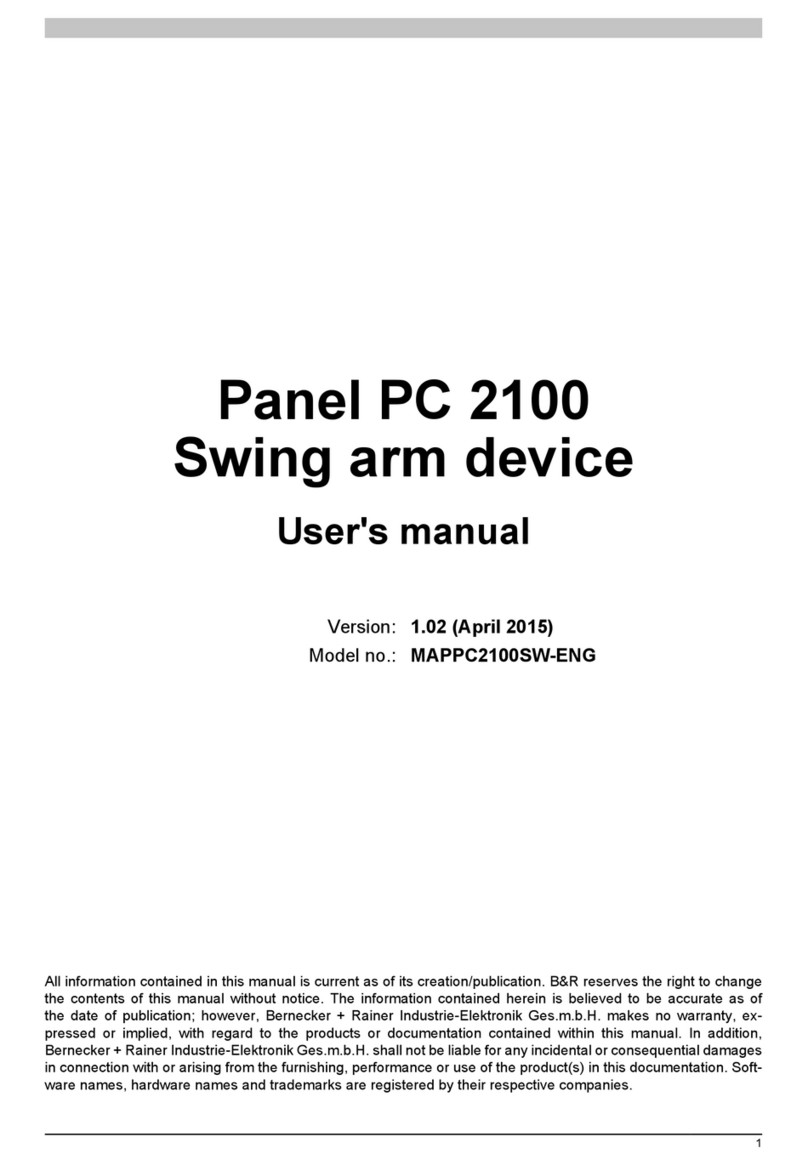
B&R Industries
B&R Industries Panel PC 2100 user manual
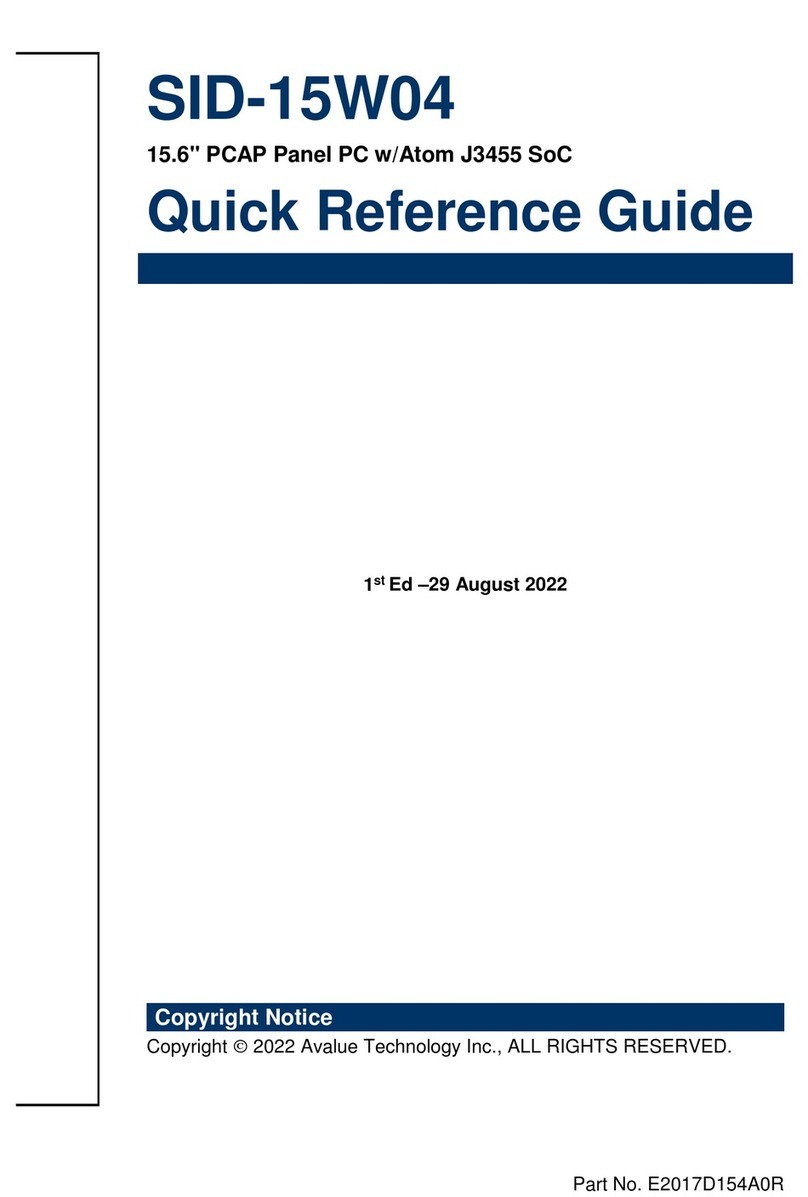
Avalue Technology
Avalue Technology SID-15W04 Quick reference guide

Direct National
Direct National Smart-Pad Operation manual

Crestron
Crestron DualTouch DTT-15V3 Operation guide
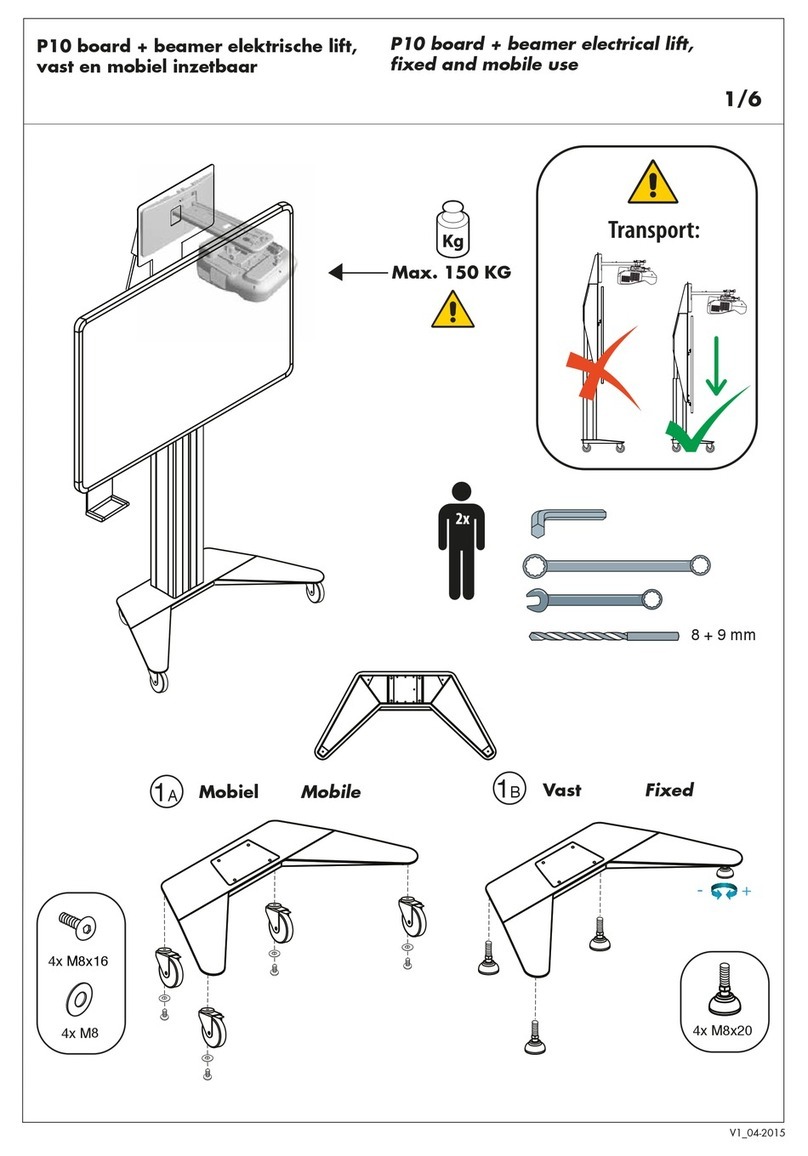
FOCUS TOUCH
FOCUS TOUCH P10 Mounting instructions

FabiaTech
FabiaTech FP8080 Series Users Quick Reference
